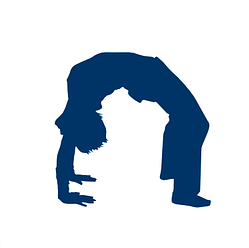Yin Yoga: A Happy Marriage or a Colossal Sham?
Yin Yoga is a combination of Yoga and Acupuncture. Yin Yoga weds the insights gained by thousands of years of Traditional Chinese Medicine practice to the wisdom of yoga.
Integrative medicine is now gaining popularity around the world. In theory it seems to be the future of the medical system. In a country like India with the existence of extensive medical pluralism, integration of medical systems might prove to be beneficial. How far is this practically possible? The objective of this article is to explore this possibility by taking an example of Yin Yoga.
Yin Yoga is a combination of Yoga and Acupuncture. Yin Yoga weds the insights gained by thousands of years of Traditional Chinese Medicine practice to the wisdom of yoga. They are both separate systems of medicine widely employed in isolation as stand-alone treatments. They are evidence based and accepted by the medical fraternity internationally.
Yoga has its origins from India while acupuncture originated from Taoism in ancient China. Is the integration and combination of these two systems possible?
What is Yoga?
Yoga is derived from the Sanskrit “yuj” which means “to unite”. Therefore yoga means the union of the individual soul with the universal soul. Different traditional Indian texts provide insight into the definition of yoga from different perspectives.
The Bhagavad Gita defines yoga as equanimity.
“Samatvam yoga ucyate” (Chapter 2, Verse 48)
It also says yoga is dexterity in action.
“yogah karmasu kausalam” (Chapter 2, Verse 50)
The most widely accepted basic text of yoga is the Patanjali yoga sutras. Sage Patanjali defined yoga as the cessation of the functional modifications of the mind.
“yogah citta vritti nirodhah” (Chapter 1, Sutra 2)
In the modern era yoga has become synonymous with asana. Most of the Western world attributes the word yoga to performing asanas or pranayamas and views it merely as a form of physical exercise. This is an erroneous perception. The various practices involved in Yoga include self-restraint (Yama), observance (Niyama), physical postures (Asana), breath regulation (Pranayama), withdrawal of the senses (Pratyahara), concentration (Dharana), meditation (Dhyana) and cleansing procedures (Kriya).
What is Acupuncture?
Acupuncture is a system of medicine that originated in China over 5000 years ago. It is derived from the Latin words “Acu” meaning “needle” and “pungue” meaning “to prick”. Acupuncture involves the pricking of fine needles on specific points of the body for treating illnesses.
Philosophical Basis of Integration
Yoga philosophy believes in the existence of certain energy channels running throughout the human body called as Nadis. These nadis are channels that facilitate the flow of the life force called as prana.
There are 72,000 nadis running throughout the human body adopting the path of least resistance. Out of these, 14 are considered to be most important.
Acupuncture philosophy also believes in the existence of these energy channels. They are called meridians. The vital energy flowing through these meridians is called chi/qi. There are 12 paired meridians and 8 unpaired or extra ordinary meridians.
The pathways of many of these meridians coincide with the pathways of the nadis. The Governing Vessel channel’s pathway runs on somewhat similar lines as the Sushumna nadi. Both nadis and meridians have their terminal points on the tips of fingers and toes and also around the eyes, ears and mouth.
Similarities can be drawn between the theories of vital force in both systems. It is called prana in yoga and chi/qi in Traditional Chinese Medicine.
The concept of yin and yang from acupuncture can be co-related with the concept of ida and pingala from yoga.
Both of these philosophies believe that an obstruction to the flow of energy through their channels leads to disease or abnormality.
Based on these fundamental principles, yoga and acupuncture are combined together.
How does Acupuncture enhance the effects of Yoga?
Acupuncture is known to be one of the most effective and efficient methods of pain management. The performance of yoga asanas may induce muscular pain in beginners and sometimes in advanced practitioners as well. Acupuncture can be used for relieving the pain following yoga therapy.
The pricking of fine needles on the motor points of muscles is found to decrease their stiffness greatly, thereby increasing the flexibility. This facilitates better performance of yoga asanas with greater freedom of motion.
How does Yoga Affect Acupuncture?
The practice of yoga normally affects the superficial tissues of the body which are considered to be yang in nature. Much of the yoga that is commonly practiced is active practice that primarily focuses on movement and muscular contraction. This activates the yang attribute. To bring balance, yin yoga is practiced. This type of yoga targets the deeper yin tissues of the body or connective tissues like bone, ligament and even joints.
The practice of yoga asanas helps in stretching out the meridians or energy channels. This stretching opens up any energy blocks in the meridians. The six meridians that begin or end in the lower body are of most interest as these are the lines affected the most by yin yoga asanas. They are the Liver, Gall Bladder, Kidney, Urinary Bladder, Spleen, and Stomach meridians.
Some yoga poses which are beneficial in stretching these meridians are:
- Adhomukhashwanasana (Downward dog)

- Chakrasana (Wheel pose)

- Vrikshasana (Tree pose)

- Shashankasana (Hare pose)

- Baddha Konasana (Butterfly)

Benefits of Yin Yoga
- Increased flexibility
- Pain relief
- Reduced fatigue and improved stamina
- Reduced stiffness
- It brings homeostatic balance in the body and enables optimum physiological functioning
- Dissolves energy blocks and facilitates free flow of energy
In conclusion, both yoga and acupuncture enhance the effects of each other. When combined they provide added benefits to the practitioner in comparison with isolated practice. Therefore, the combination of yoga and acupuncture is not just feasible but ideal.
